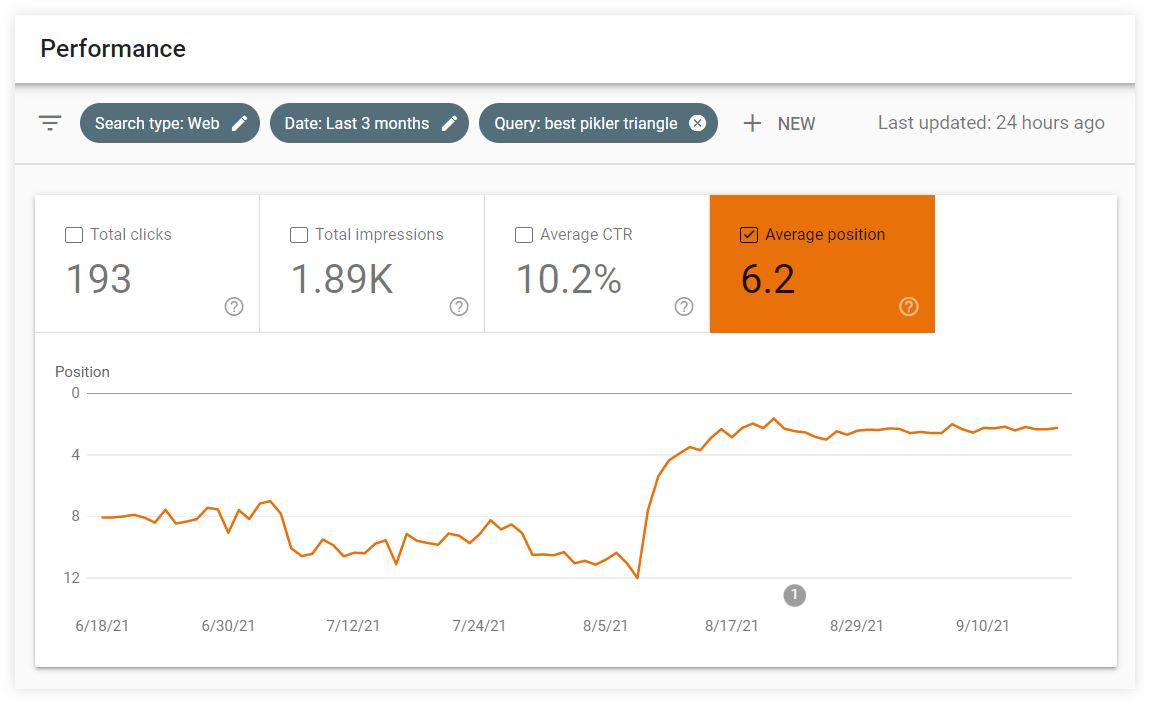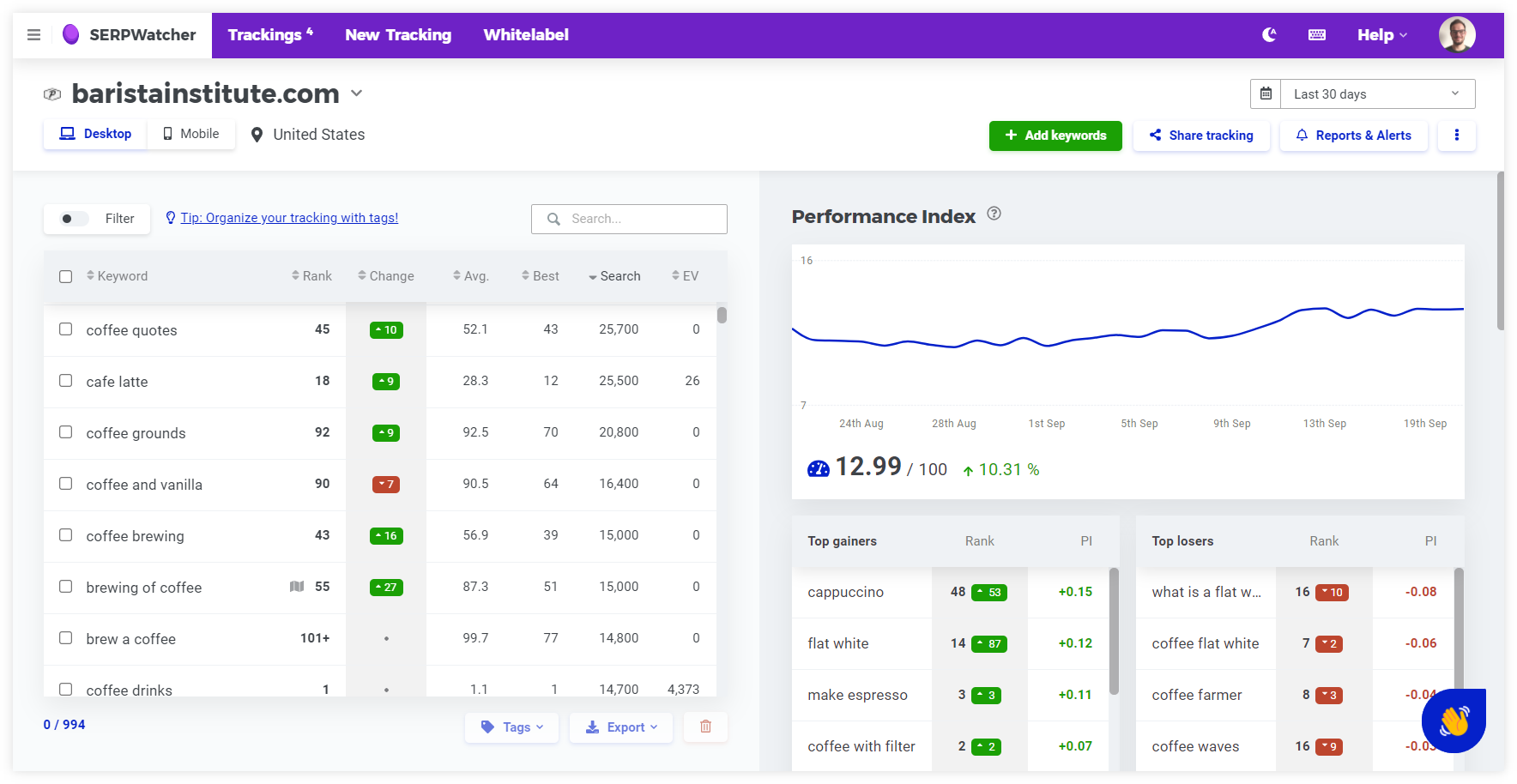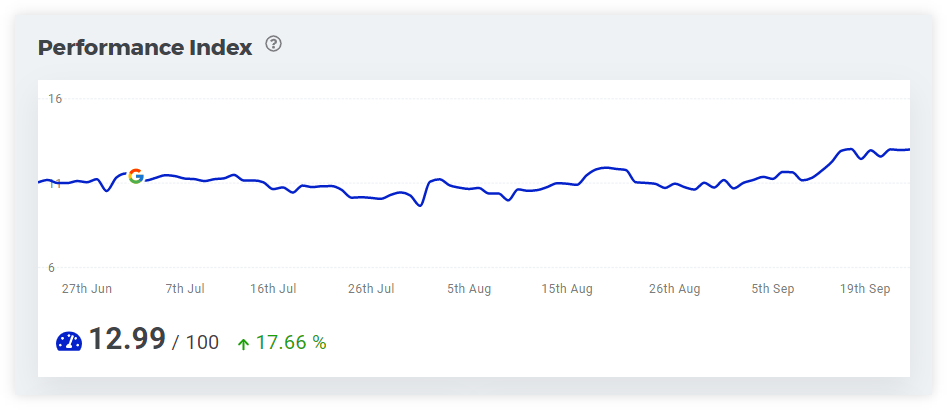What is rank tracking?
Rank tracking is checking positions of keywords that a website ranks for in search engine result pages (SERPs). These keywords include the following types:
- Keywords that are used on the website.
- Many other terms you necessarily don’t optimize for.
- Keywords that your competitor rank for.
Rank tracking is about tracking and analyzing the organic positions of keywords in time. It’s based on current rankings and historical data, so you can analyze the progress and its impact on organic traffic.
Should I care about rank tracking?
Rank tracking is an essential part of the SEO workflow. It gives you information about how well the website stands on the market. On top of that, keyword rankings remain one of the most important KPIs in SEO.
However, you shouldn’t focus solely on the positions. Being obsessed with rank tracking will not help you to understand how the keyword positions’ progress influences the overall organic traffic potential of the website.
Factors that influence the keyword rankings:
- Personalized results
- Location/IP address
- Device used
- Google data centers synchronization
- Time
- Search settings
- Other factors
It doesn’t matter which SEO tool you use, the rankings will not be always 100% accurate, but it’s perfectly fine since it’s impossible to provide the results based on the mentioned factors.
There can be small discrepancies as we found out in our case study. Keep in mind that rank tracking shouldn’t be the only priority of search engine optimization.
How to track my keyword positions
Generally, there are 2 major options for rank tracking:
- Google Search Console
- Rank tracking tools
Google Search Console enables you to see a lot of valuable data including the progress of positions that the website ranks for in organic search results.
The report is under the “Performance” tab in which you can set specific filters and see the average position, CTR, number of impressions and clicks for each search query.
On the other hand, rank tracking tools (like SERPWatcher) are designed for this purpose, so their UI and features give you a lot more insights than the Search Console.
The main features that your rank tracking tool should have:
- Accurate keyword positions
- Historical data
- Aggregated metrics that evaluate how changes in rankings influence the organic traffic
- Daily updated data
- Search volumes
- Potential organic traffic
Many of the tools are freemium or with a time-limited trial. Make sure to read reviews and test the tools so you spend your budget wisely.
AI search monitoring
Tracking the presence of your brand and website in AI engines is another important step in rank tracking – you can use our free Mangools AI Search Watcher – a powerful LLM-based rank tracker that helps you monitor how your brand is mentioned across major AI search engines like ChatGPT, Gemini, Claude, Mistral, and Llama.
It runs each prompt multiple times to generate reliable average rankings, visibility scores, and citation insights
You can also track competitors side-by-side, see how AI “perceives” your brand, and use prompt suggestions tailored to your business — all helping you shape your Generative Engine Optimization (GEO) strategy.
Rank tracking best practices
To get the most of keyword rankings, it’s important to understand that ranking #1 for each keyword should not be the only priority.
Otherwise, it wouldn’t make sense to do it all and that’s also why you may find sources saying that rank tracking is not important at all. If you obsessively track the positions, you lose a lot of time that can be invested in actually improving the positions.
The goal of rank tracking is to track the overall progress of keyword positions and their impact on organic traffic.
Sometimes ranking on the highest positions for 10 keywords will bring less quality organic traffic than other 10 keywords for which the website ranks in the middle of the 1st SERP. Likewise, a small drop of one very important keyword can be more critical compared to significant positions’ increase of 10 other keywords.
To know this, you need to work with metrics that take these changes into account and provide clear information about the potential organic traffic.
One of these metrics is the Performance Index used in SERPWatcher. It’s based on keyword positions, search volumes and estimated organic visits.
To recap, do rank tracking with the following things in mind:
- Work with both current and historical data updated on a daily basis.
- Use tools with aggregated metrics and indexes that calculate what’s behind the changes.








